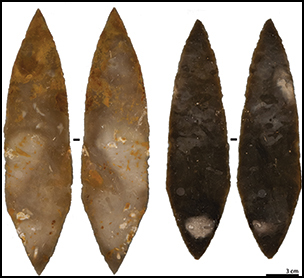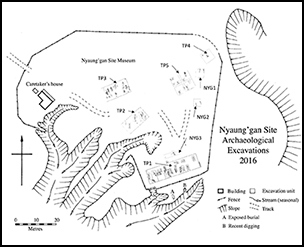Editorial
EDITORIAL
-
- Published online by Cambridge University Press:
- 27 June 2018, pp. 565-572
-
- Article
-
- You have access
- HTML
- Export citation
Research
Climate change and the deteriorating archaeological and environmental archives of the Arctic
-
- Published online by Cambridge University Press:
- 27 June 2018, pp. 573-586
-
- Article
-
- You have access
- Open access
- HTML
- Export citation
The unique Solutrean laurel-leaf points of Volgu: heat-treated or not?
-
- Published online by Cambridge University Press:
- 27 June 2018, pp. 587-602
-
- Article
- Export citation
Harvesting and processing wild cereals in the Upper Palaeolithic Yellow River Valley, China
-
- Published online by Cambridge University Press:
- 27 June 2018, pp. 603-619
-
- Article
- Export citation
A tale of two tells: dating the Çatalhöyük West Mound
-
- Published online by Cambridge University Press:
- 27 June 2018, pp. 620-639
-
- Article
-
- You have access
- Open access
- HTML
- Export citation
Radical ‘royals’? Burial practices at Başur Höyük and the emergence of early states in Mesopotamia
-
- Published online by Cambridge University Press:
- 27 June 2018, pp. 640-654
-
- Article
- Export citation
The ring sanctuary of Pömmelte, Germany: a monumental, multi-layered metaphor of the late third millennium BC
-
- Published online by Cambridge University Press:
- 27 June 2018, pp. 655-673
-
- Article
-
- You have access
- Open access
- HTML
- Export citation
Mixing metaphors: sedentary-mobile interactions and local-global connections in prehistoric Turkmenistan
-
- Published online by Cambridge University Press:
- 27 June 2018, pp. 674-689
-
- Article
- Export citation
A first absolute chronology for Late Neolithic to Early Bronze Age Myanmar: new AMS 14C dates from Nyaung'gan and Oakaie
-
- Published online by Cambridge University Press:
- 27 June 2018, pp. 690-708
-
- Article
-
- You have access
- HTML
- Export citation
The Anyang Xibeigang Shang royal tombs revisited: a social archaeological approach
-
- Published online by Cambridge University Press:
- 31 May 2018, pp. 709-723
-
- Article
-
- You have access
- Open access
- HTML
- Export citation
Fulayj: a Late Sasanian fort on the Arabian coast
-
- Published online by Cambridge University Press:
- 27 June 2018, pp. 724-741
-
- Article
- Export citation
‘The gleaming mane of the serpent’: the Birka dragonhead from Black Earth Harbour
- Part of:
-
- Published online by Cambridge University Press:
- 27 June 2018, pp. 742-757
-
- Article
-
- You have access
- HTML
- Export citation
The weight of ritual: Classic Maya jade head pendants in the round
-
- Published online by Cambridge University Press:
- 27 June 2018, pp. 758-771
-
- Article
- Export citation
100 years later: the dark heritage of the Great War at a prisoner-of-war camp in Czersk, Poland
-
- Published online by Cambridge University Press:
- 27 June 2018, pp. 772-787
-
- Article
-
- You have access
- HTML
- Export citation
Retracing the footsteps of H.H. Thomas: a review of his Stonehenge bluestone provenancing study
-
- Published online by Cambridge University Press:
- 31 May 2018, pp. 788-802
-
- Article
- Export citation
Debate
Boots on the ground in Africa's ancient DNA ‘revolution’: archaeological perspectives on ethics and best practices
-
- Published online by Cambridge University Press:
- 27 June 2018, pp. 803-815
-
- Article
-
- You have access
- Open access
- HTML
- Export citation
Review Article
From totems to myths: theorising about rock art
-
- Published online by Cambridge University Press:
- 27 June 2018, pp. 816-818
-
- Article
- Export citation
The expanding and deepening scope of historical archaeology
-
- Published online by Cambridge University Press:
- 27 June 2018, pp. 819-821
-
- Article
-
- You have access
- HTML
- Export citation
Book Reviews
Nicole Boivin, Rémy Crassard & Michael Petraglia (ed.). Human dispersal and species movement. From prehistory to the present. 2017. Cambridge: Cambridge University Press; 978-1-107-16414-7 £89.99.
-
- Published online by Cambridge University Press:
- 27 June 2018, pp. 822-823
-
- Article
-
- You have access
- HTML
- Export citation
Gordon Noble. Woodland in the Neolithic of Northern Europe: the forest as ancestor. 2017. Cambridge & New York: Cambridge University Press; 978-1-107-15983-9 £75.
-
- Published online by Cambridge University Press:
- 27 June 2018, pp. 823-825
-
- Article
- Export citation















